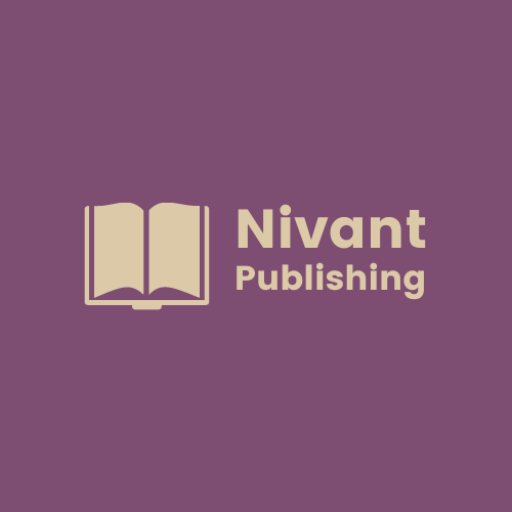In the realm of creative writing, two predominant styles often emerge: the pantser and the plotter. These terms, while somewhat whimsical, encapsulate two distinct approaches to storytelling. A pantser is a writer who prefers to “fly by the seat of their pants,” diving into the narrative without a detailed outline or predetermined structure.
This spontaneous method allows for a free-flowing creative process, where characters and plots can evolve organically as the story unfolds. On the other hand, a plotter meticulously plans every aspect of their narrative before putting pen to paper. This structured approach often involves detailed outlines, character sketches, and even scene breakdowns, providing a roadmap that guides the writer through the complexities of their story.
Understanding these two styles is crucial for aspiring authors as they embark on their writing journeys. Each approach has its own merits and challenges, and recognizing which style resonates with you can significantly impact your writing experience. While some writers may find joy in the unpredictability of pantsing, others may thrive in the clarity and organization that plotting provides.
Ultimately, both methods serve the same purpose: to tell compelling stories that captivate readers. By exploring these styles, writers can better navigate their creative processes and discover what works best for them.
Key Takeaways
- Pantser writers prefer to write without a detailed plan, allowing the story to unfold organically, while plotters prefer to outline and plan their story before writing.
- Pros of the pantser writing style include the freedom for creativity and spontaneity, while cons include the potential for writer’s block and a lack of direction.
- Pros of the plotter writing style include a clear direction and structure, while cons include the potential for feeling restricted and limited in creativity.
- Finding the right style for you involves understanding your own writing process, experimenting with both styles, and finding a balance that works for you.
- Combining pantser and plotter styles can involve outlining key plot points while allowing room for spontaneous creativity, or starting with a loose outline and adjusting as the story progresses.
- Tips for pantser writers include embracing uncertainty, trusting the writing process, and being open to change and revision.
- Tips for plotter writers include staying flexible, allowing room for creativity within the plan, and being open to adjusting the outline as the story evolves.
- Embracing your unique writing style involves understanding and accepting your strengths and weaknesses as a writer, and finding a process that allows you to produce your best work.
Pros and Cons of the Pantser Writing Style
The pantser writing style is often celebrated for its inherent freedom and spontaneity. One of the most significant advantages of this approach is the ability to explore ideas without constraints. Pantsers can let their imaginations run wild, allowing characters to take unexpected turns and plots to develop in surprising ways.
This organic evolution can lead to unique story arcs that might not have emerged through a more rigid planning process. Additionally, many writers find that this style fosters a sense of excitement and discovery, making the act of writing feel like an adventure rather than a chore. However, the pantser style is not without its drawbacks.
The lack of structure can sometimes lead to confusion or disorganization within the narrative. Writers may find themselves veering off course or struggling to connect various plot points as they write. This can result in a lengthy revision process, as significant changes may be needed to create coherence in the story.
Furthermore, pantsers may experience writer’s block more frequently, as they rely heavily on inspiration in the moment rather than a clear plan to guide them through challenging sections. Balancing creativity with coherence can be a delicate dance for those who embrace this style.
Pros and Cons of the Plotter Writing Style

In contrast to pantsers, plotters enjoy a sense of control over their narratives. The primary advantage of this writing style lies in its structured approach, which allows for thorough planning and organization. By outlining their stories in advance, plotters can identify potential plot holes, develop character arcs, and ensure that all elements of the narrative align cohesively.
This foresight can lead to a more polished final product, as writers can address issues before they become entrenched in the manuscript. Additionally, having a clear roadmap can alleviate some of the anxiety associated with writing, as plotters know exactly where they are headed. Nevertheless, the plotter style has its own set of challenges.
The rigidity of a detailed outline can stifle creativity for some writers, leading to a sense of predictability in their work. When every twist and turn is predetermined, there may be less room for spontaneous inspiration or character development that occurs naturally during the writing process. Moreover, if a plotter becomes too attached to their outline, they may struggle to adapt when new ideas arise or when characters begin to take on lives of their own.
This inflexibility can hinder growth and exploration within the narrative.
Finding the Right Style for You
Determining whether you are more of a pantser or a plotter is an essential step in your writing journey. However, it’s important to recognize that these styles are not mutually exclusive; many writers find themselves somewhere in between. To discover your preferred approach, consider experimenting with both methods.
Try writing a short story as a pantser, allowing your creativity to flow without constraints. Then, switch gears and outline another story in detail before writing it out. Reflect on which process felt more enjoyable and productive for you.
Additionally, consider your personality and how it influences your writing style. If you thrive on spontaneity and enjoy surprises in your creative endeavors, you may lean towards pantsing. Conversely, if you find comfort in structure and enjoy planning ahead, plotting might be your natural inclination.
Remember that there is no right or wrong way to write; what matters most is finding a method that resonates with you and enhances your storytelling abilities.
How to Combine Pantser and Plotter Styles
For those who appreciate elements of both styles, combining pantser and plotter techniques can yield a unique and effective writing process. This hybrid approach allows writers to enjoy the freedom of discovery while still maintaining some level of structure. One way to achieve this balance is by creating a loose outline that highlights key plot points without dictating every detail.
This way, you have a general direction while still leaving room for creativity and spontaneity. Another effective strategy is to outline only certain sections of your story while allowing others to unfold organically. For instance, you might choose to plot out the beginning and climax of your narrative while letting the middle develop more freely.
This method provides guidance during critical moments while still allowing for exploration in less pivotal sections. By embracing both styles, you can create a writing process that feels authentic to you and encourages both creativity and coherence.
Tips for Pantser Writers

For those who identify as pantsers or are interested in trying this approach, there are several strategies that can enhance your writing experience. First and foremost, embrace the chaos! Allow yourself to write without judgment or self-censorship during your initial drafts.
The goal is to capture your ideas as they come without worrying about perfection or structure at this stage. Remember that revisions are part of the process; you can always refine your work later. Another helpful tip is to set aside dedicated time for brainstorming before diving into your writing sessions.
Jot down character traits, potential conflicts, or intriguing settings that spark your interest. This pre-writing exercise can serve as a springboard for your creativity while still allowing you to maintain an element of surprise in your storytelling. Finally, don’t hesitate to take breaks when needed; stepping away from your work can provide fresh perspectives and inspire new ideas when you return.
Tips for Plotter Writers
For those who prefer plotting their stories in advance, there are several techniques that can enhance your outlining process and overall writing experience. Start by developing a flexible outline that includes major plot points but allows for adjustments along the way. This flexibility will enable you to adapt if new ideas arise during the writing process without feeling constrained by your original plan.
Additionally, consider creating character profiles that delve into their motivations, backgrounds, and arcs throughout the story. Understanding your characters deeply will help you craft more authentic dialogue and interactions as you write. Finally, remember that outlines are not set in stone; be open to revising them as your story evolves.
Embracing change can lead to richer narratives and unexpected twists that enhance your storytelling.
Embracing Your Unique Writing Style
In conclusion, whether you identify as a pantser or a plotter—or perhaps even a combination of both—embracing your unique writing style is essential for fostering creativity and productivity in your work. Each approach offers distinct advantages and challenges that can shape your storytelling journey in meaningful ways. By understanding these styles and experimenting with different techniques, you can discover what resonates with you personally.
Ultimately, there is no one-size-fits-all method for writing; what matters most is finding an approach that allows you to express yourself authentically while crafting compelling narratives. As you continue on your writing journey, remember that flexibility is key—be willing to adapt and evolve as both a writer and storyteller. Embrace your individuality and let it shine through in every word you write!
When discussing the merits of being a “pantser” (someone who writes by the seat of their pants) versus a “plotter” (someone who meticulously plans their writing), it’s essential to consider various perspectives and methodologies in writing. For those interested in exploring this topic further, you might find additional insights and related discussions on writing techniques and strategies on Nivant’s book section. This page offers a range of resources that could enhance your understanding of different writing styles, potentially helping you decide which approach suits you best.





0 Comments